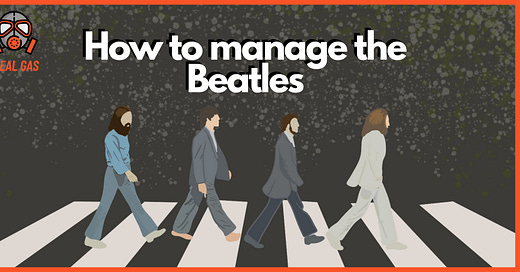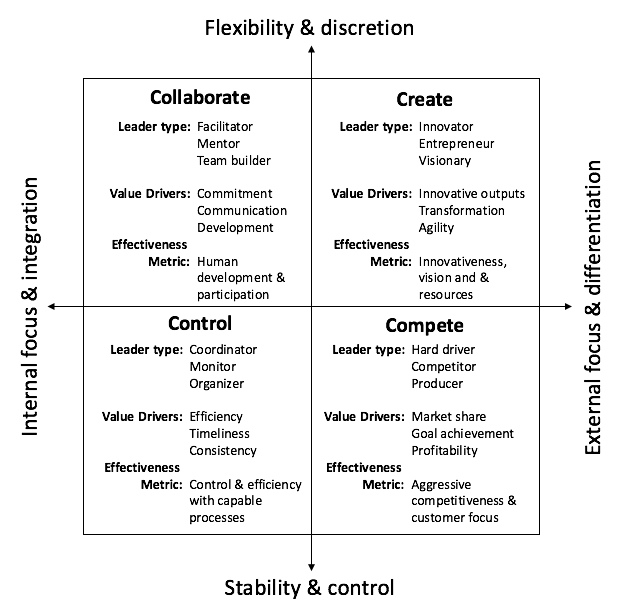Pretty much anyone who knows the two of us knows about our obsession with the Beatles and their music. We can often be found unreasonably forcing everyone around us to listen to them and like them as we do. So it’s only a matter of time before we wrote about them here as well. It has roughly been a month since we started Ideal Gas and we have covered quite a few topics ranging from understanding culture to competencies to organisation design. So today we would like to re-visit some of these ideas and illustrate using the Beatles how they all come together. Now, neither are we going to try to analyse why they were successful nor are we going to attribute these concepts to their success. We are simply going to look for patterns keeping in mind the context in which they worked for the Beatles to better understand how they might work for our own teams in the future.
Before we dive in, if you have been following us so far, do consider subscribing to our newsletter as it would make us very happy and help us continue to bring you juicy break-downs of the world of HR. So here we go…
Here is a brief history of the band and their timeline created by this Reddit user which neatly captures the success of the band for those of you who are not very familiar with them. Feel free to skip ahead if you are already a Beatles maniac, but the short summary is that they were active for almost a decade, were very experimental and are considered to be the most successful band of all time.
We will be revisiting the following concepts that we have covered previously and we will be analysing the band majorly from the following lenses
Managing the Beatles
Though there is a lot of coverage out there about John, Paul, George and Ringo, very little is spoken about their manager Brian Epstein and producer George Martin. They played a major role in channelizing the raw energy and enthusiasm brought in by the band. The story of how both these individuals decided to pick the Beatles for them to manage, while they were still a very small band in Liverpool is a wonderful illustration for understanding the role of competencies as a predictor of success.
Most frameworks for managing high potential talent as outlined in this HBR article revolve around the understanding of ‘potential’ and its constituents.
As we have discussed previously, knowledge and skill levels are much easier to change than motives or the individual’s self-concept and attitude. So Brain ran his family’s music store back then when heard about the Beatles for the first time from a random customer requesting their music. He followed them for a few weeks at their local performances and really liked what he describes as their ‘presence’. In an old interview, Brian talks about his first meeting with the band where Paul was almost an hour late:
“….like they were fresh and they were honest and they had what I thought was a sort of presence and this is a terrible word, a vague star quality…”
The band’s producer was also not very drawn to their sound at the start as it was very different from what he had heard before. He mentions however that what drew him to agree to produce their music was their charisma and attitude and not necessarily their skill at the time.
Brian then decided to look beyond the small inconveniences they caused. Though he liked their sound, he felt it could improve over time along with the way they presented themselves on stage. This bears a strong resemblance to how investors pick teams over ideas when they evaluate startups. Brian was also strangely aware of the power of artefacts. He was responsible for the band’s transition from leather jackets and untidy appearances to suits and their iconic uniform haircuts. Though the band was unwilling to accept these changes at the start, he won them over to his side illustrating the growing popularity of the television all over the world at the time. This idea would stick with the band for years to come as they perhaps understood the power of having a narrative around their music. They made it a point to tag some kind of a story (no one knows if they are real or made up) behind their popular releases whenever they gave interviews at press conferences. Here’s a rabbit hole if you’re interested.
None of these are as evident as their magnum opus, Sgt. Pepper’s lonely heats club band’s album release. Not only was the album cover iconic, it also included cut outs and art work bolstering the ‘story’ of ‘Sgt. Pepper’, a character they made up as an excuse for their experimental approach. By the way, The Nerdwriter has a beautiful break down of Beatles album covers and is definitely worth checking out.
Culture and contrarianism
Through the Beatles started out as a ‘pop’ group in the early 60’s, they quickly evolved to be known for their experimental approach to music. Take a look at their lyrics for example. they went from “she loves you yeah yeah yeah..” to “She's well-acquainted with the touch of the velvet hand Like a lizard on a window pane” in a matter of 5 years. Lets use the competing values framework to understand this transition better. The basic idea is that most organisations fall under 4 broad types of cultures and the chart below illustrates the characteristics that make individuals successful within these cultures.
It is very easy to classify the culture within the band as more oriented towards the ‘create’ quadrant for obvious reasons. However it is also worthy to note the role of the ‘control’ culture in their success. Psychologists agree that creative pursuits often require a lot of trial and error which only happens when you put out immense quantities of work. Here are a few examples:
Mozart and Beethoven each composed more than 600 pieces of music. Most of their contemporaries composed fewer than 100 in their careers
Picasso produced so many pieces (~50,000) that art scholars still can’t even count them all. Most other professional artists produced a few hundred to a couple thousand at most
Mark Twain published almost eighty books in less than fifty years, a staggering level of output for any author
Studies show that Nobel prize winners produce nearly twice as much work compared to their colleagues in the same fields
Paul is often credited for the sheer number of albums and singles that the band released but this would not have been possible without the band existing in seemingly contradictory cultures while demonstrating competing values. This ties back to the findings from the research that best performers are the ones that can demonstrate the competencies required to succeed on all four quadrants.
How to start a movement
One could go on all day analysing the Beatles but there is no denying that they knew how to create a movement. I’m going to use this as a segue to introduce you to my most favourite TED talk of all time (by a huge margin). It is about how to start a movement and it is surprisingly short:
Though John was already a frontman for his band, ‘the quarrymen’, he understood the potential in Paul and accepted him as an equal. This was the start of the Beatles. Paul then introduced George and they all finally discovered Ringo. Similar to the first 3-4 guys in this video, the Beatles would continue to perform for hours at a stretch for years at pubs in Germany even when they had very few fans.
We would like to leave you with this thought as summarised beautifully by Derek:
“….leadership is over-glorified. Yes, it was the shirtless guy who was first, and he'll get all the credit, but it was really the first follower that transformed the lone nut into a leader. So, as we're told that we should all be leaders, that would be really ineffective. If you really care about starting a movement, have the courage to follow and show others how to follow. And when you find a lone nut doing something great, have the guts to be the first one to stand up and join in”







